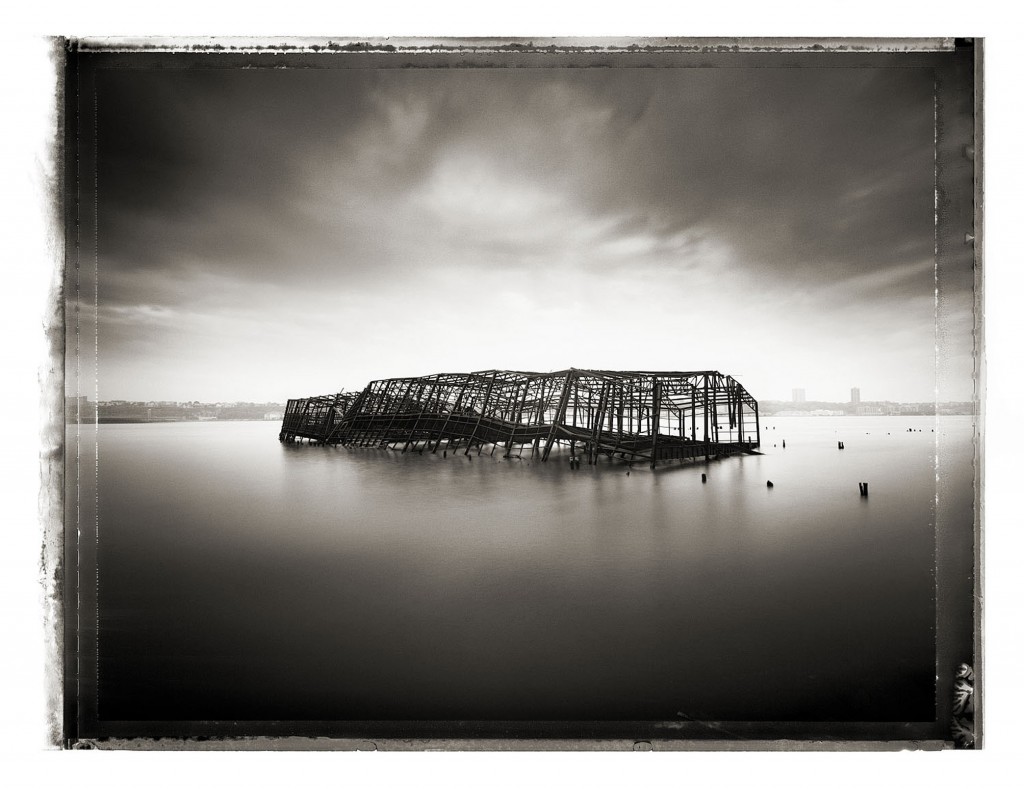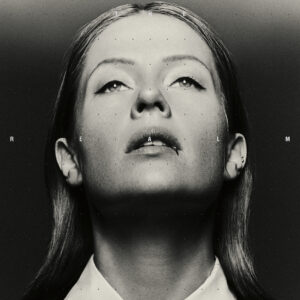It’s pretty difficult to make the city that never sleeps go to sleep, but German photographer Christopher Thomas manages it. He does it by capturing places when nobody is around, and he uses a large-format camera. The results are atmospheric black-and-white portraits of an abandoned city that border on the magical. The odd thing is not that New York has been abandoned as if in some I Am Legend/ Omega Man scenario, but that every photograph looks as if it was shot at least 50 years ago, sometimes more. Looking at his Cyclone Rollercoaster, an iconic Coney Island attraction built in 1927, and you can just imagine Woody Allen is a child there, but in the fictional family home actually underneath it from the film Annie Hall.
In fact, Thomas’ New York series was taken between 2001 and 2009. It’s as if he’s in denial of the present. The feeling that you’re looking at ancient photos is compounded by the fact that they’re all printed on air-dried paper from Arches in France, who’ve been in the business since 1492. One day these works will be old, but they will still look the same- Thomas has also used archival pigment print,
giving them at least a 200-year life expectancy.
Herr Thomas has chosen his locations very carefully- rarely does any sign of the twenty-first century creep in. In his portrait of Midtown skyscrapers, View from Rockerfeller, buildings become ghosts with distance, steam rises from condensers, and the thick air darkens and broods overhead. The shot was taken from the GE (formerly RCA) Building, and the view is from the roof observation desk- at least as good as the Empire State Building’s, incidentally. It is a classic 40s or 50s cityscape of the City That Never Sleeps. But hold on, what’s that glass-crowned octagonal skyscraper rising up on the left? It’s 383 Madison Avenue, pure corporate post-modernism built in 2001, and it’s just too big to angle out of that shot! On the other hand, Radio City Music Hall, another element of the Rockerfeller Center complex (which was design-led by New York’s greatest 20th-century skyscraper architect Raymond Hood to defy The Depression), is still authentic enough to be an architectural snapshot of late Art Deco from the time.
Elsewhere in Manhattan, other great buildings are documented meticulously: Grand Central station’s ticket hall, including the star-map ceiling, and the Woolworth Building, framed by classical columns on nearby Park Row, giving it the dignity of a presidential statue in Washington. Frank Lloyd Wright’s Guggenheim in the snow has a beautiful and almost eerie silence to it. He brilliantly captures the spatial drama of Fifth Avenue, shot looking north from 21st Street in the heart of the Flatiron District where there’s no pesky modernity to ruin things. But it’s not all architecture. New York’s water towers and Central Park are other subjects. Central Park, The Mall II, a snow scene, is so perfect, it’s almost chocolate-box cheesy. In Pier at Riverside Park, on the other hand, he frames a slumping metalwork segment of a pier ruin stranded in the water, and the effect is truly timeless, elemental and breathtaking.
Of course, it’s great fun looking for the contemporary that Thomas just couldn’t avoid. His shot of an Ice Cream Parlor with its tacky giant display cones on poles is one of several images evoking sunnier days long gone. If anything in this case, it is underlined by rubbish bags set out down the road. In only one photograph is there a human. In his exterior of Grand Central Terminal I, taken at miraculously people-free 06:14, there is a lone figure with a tripod, standing in a reflection in a Banana Republic window. That’s Herr Thomas, taking the shot!
All these shots are long exposures so that not only detail is amplified, but the water becomes placid and clouds blur. That being said, the minute hand on the clocktower of Hoboken Terminal is mysteriously sharp. Digitally manipulating urban images is a sub-trend of this century, producing other-worldly revelations of a parallel-built reality from the likes of Edgar Martins, Gregor Graaf or Alexander Apóstal (check out that last name in Tate Modern right now). Thomas’ parallel realities come from camera positions that censor out the present, and from his print techniques. A clue as to why lies in another recent series of his. PASSION is a re-enactment of scenes from the life of Jesus, with New Testament quotes- it’s all muted colours, texture, deadly serious faces and impending tragedy. Thomas is obsessed with recreating the past. In New York, the past is another illusion, but his photos magnificently bring out a depth and profundity underlying the rush and glitter of the city of spectacle.
Herbert Wright
Christopher Thomas- New York Sleeps, Now showing 10-6 Tuesday-Saturday at, The Wapping Project Bankside, 65A Hopton Street, London SE1 9LR






